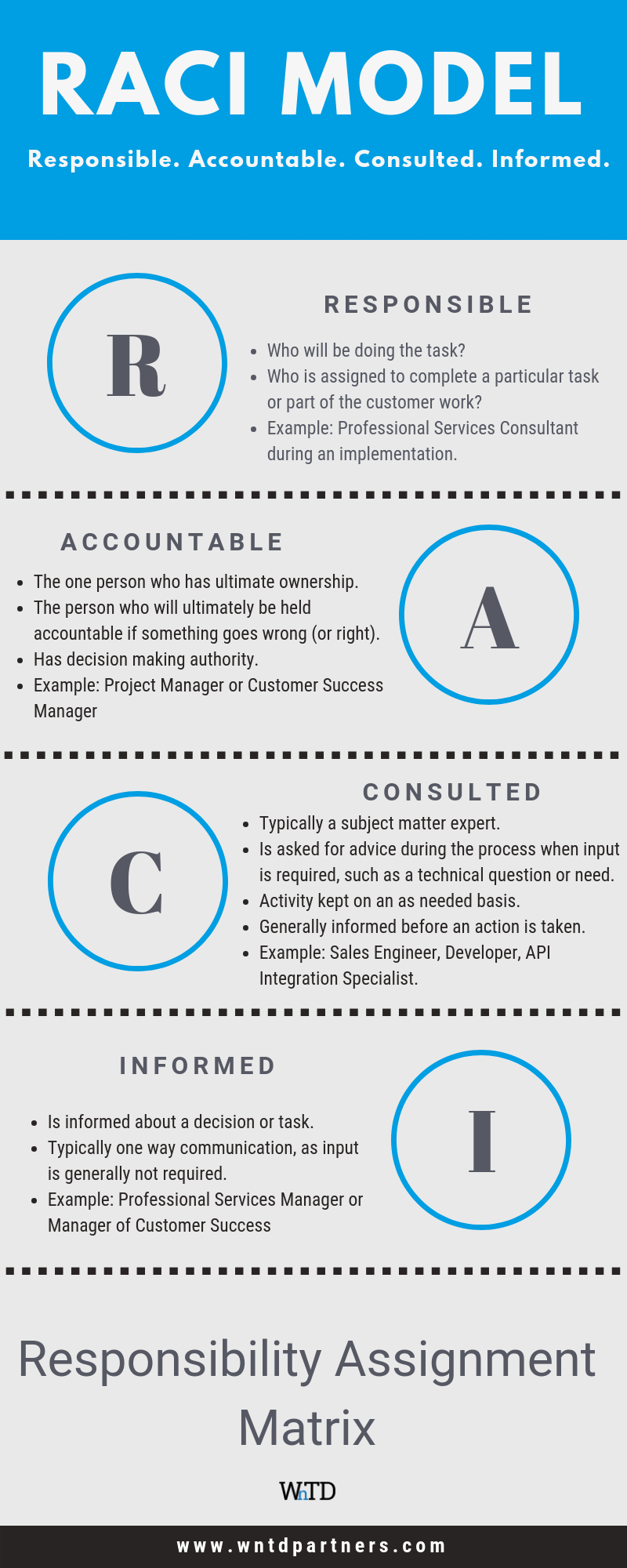The sales to customer success handoff is one of the most important intersections in the customer journey. It can make the difference between successful product adoption or a churn risk waiting to happen. To properly examine this topic let’s start out by stepping out of our current professional frame of reference and look at this topic from the customer’s perspective and consider the following scenario:
Most of us have been here, it’s that moment when you have made a purchase or signed a contract and you are left wondering where all the eager help and quick responses have gone. Your salesperson was diligent in responding to questions and guided you through your decision-making process and buying journey. It has been a great experience – up to this point. Now that you’ve signed the dotted line, you get passed around faster than a football off the snap and more often than an offensive puck on a power play. Or worse, you are at a standstill and left with no response at all.
We know as customers that this is a frustrating feeling, yet so many companies struggle to get the crucial step of the sales to customer success (or client services) handoff right. Some organizations miss putting a process in place altogether. This post will provide tactical and actionable steps your organization can put in place.
The entire customer journey is critical for long-term success, yet many organizations let their customers fall through the proverbial cracks, and worse still, leave these customers to climb out themselves. Let’s talk about where you need to start in order to avoid this from happening to your customers.
When we are evaluating a customer journey we always look at the bumps and gaps that customers may feel due to the holes in an organization’s internal process. You never want your customers feeling the bumps of your internal process. It’s crucial to iron them out, otherwise, it can be quite costly for your customer and your business. I evaluate customer journey processes using the three C’s: Clarity. Continuity. Consistency. Continually ask yourself if your processes are providing these three elements.
You need to begin with mapping out your current process. Even if you don’t have a formal structure or customer journey in place, your customers are going through some sort of journey and it’s vital that you understand what that journey looks and feels like from your customers perspective. This will help you identify what your organization is doing well and where it’s failing. In order for this to be a meaningful exercise, you have to be brutally honest with yourself. Map out best and worst case scenarios. If you map out what you hope the experience is like for your customers you will overlook the gaps and hurdles your customers face. It will end up being an ineffective use of your time.
To begin mapping this out, I find it useful to start writing it out on a whiteboard so you have a visual of each step from the beginning of the discovery process and buying cycle to the stage of being an established customer. However, for the purposes of this post, we will only focus on the Sales to Customer Success handoff stage of the customer journey.
Now, let’s get into the details of closing a sale and handing off to your client services or customer success teams.
Create a consistent internal communication process.
First off, you need to create an internal playbook for how a customer is handed off from your sales team to the customer success and support side of the business. This step can vary by business depending on how complex your product is and your customer type but there are some best practices the vast majority of organizations can follow:
- Put important customer details in your customer relationship management platform (CRM), such as why they purchased, number of users, stakeholders, contract value, and if they are they migrating from a competitor (if so, which one).
- Ensure all of your sales executives are putting the notes in the same section and fields of your CRM so it’s easy for your customer success managers to find. Consistency is key.
- Create a process for assigning your Customer Success Managers to accounts so your sales executives know exactly who they are assigning new customers to. The best assignment methodology depends on your business but popular methods are based on geographical territory, client size, or industry. Some CRMs will allow you to auto assign CSMs based on a set of criteria, which can help in creating an efficient process.
- Establish an internal method of communication for the sales team to alert the customer success team that a handoff will be occurring. Platforms such as Slack, Salesforce Chatter or internal message boards are great tools for this type of communication.
- If your sales cycles and implementations are complex your process may require an internal kick-off call meeting. The purpose of this meeting is for the sales, customer success and professional services teams to discuss the customers’ requirements and for the internal teams to agree on timelines of training and implementation. This will help to prevent the need of your customers having to repeat themselves during the transition. It will also create a smooth handover and leave them feeling confident that your company is organized and works as a team. This will position your CSMs to be viewed as trusted advisors by your customers.
Create an accountability model to make ownership of each step clear.
This step is especially important when there are multiple stakeholders involved in the sales cycle and implementation, such as professional services. Our favourite model to use is the RACI model. Consider filling out a table like the one below for your implementations and onboarding.
Establish a repeatable handoff process from sales executive to the customer success manager.
Create a prescriptive process for your sales and customer success teams to follow. Here are some tactical tips to use:
- Your hand-off process should require that all pertinent information is logged in your CRM before the deal is closed by your sales executive.
- Provide intro email templates for your sales executives to use. Each email should be partly customized to the customer but having templates will allow for a faster and more efficient intro process. It also allows for consistency across an entire team and customer base. The email template should include an introduction to their customer success manager (if they have one), quick start guides, links to important resources, and information on how to contact the support team.
- Create a deadline in which the client must be introduced from the Sales Executive to the Customer Success Manager. Typically the introduction is completed within one business day of the sale closing.
- The response time of your CSM is equally important. The customer success team should respond to the introduction with suggested kickoff call times (when applicable) and/or further resources within one business day.
- If a kickoff call is required, it’s important to try to schedule this within three to five business days of the sale closing. You want to strike while the iron is hot and excitement is still high. Otherwise, you risk the stakeholders getting distracted by other projects and the consequence could be missing deadlines and the go-live date.
Arm your sales and customer success teams with the right resources to provide to the customer upon closing the sale. Ensure your customer knows exactly what resources to use and what people to go to for implementation, training and support help.
- Have official hand-off documentation in place for your sales and customer success team members to use and share with customers. By preparing email intro templates, quick start guides, how-to videos, and a list of resources you’ll give customers the knowledge of who to go to for what problems and questions. This helps provide clarity to the customer during their transition and onboarding process. This is immensely helpful to both teams as well. It allows sales executives to remain focused on new business by not having to respond to follow up questions from customers they already closed. It also ensures that clients are talking to the right subject matter experts for onboarding and will enable your CS team to get your customers to their first time to value more quickly. This also enables a consistent customer experience regardless of the individual they are working with. Providing the right content to customers also allows them to self-serve, which frees up more of the CSMs time to work with other customers and more complex items.
- Create post-intro email templates that your customer success and professional services teams can use. This should cover important topics such as what the customer should expect during the onboarding process, next steps and suggested times for scheduling your first call/kick-off.
- If a kick-off call is required (and in most large B2B business sales it should be a requirement) create a kickoff call slide deck. Again, this should be tailored for the customer by the sales and CS team but the template will allow for a more efficient kickoff call process. Having a live handoff between sales and CS and provides continuity for your client. Putting a slide deck in place allows for consistency. Sharing a visual in the form of a checklist, timelines, and team members involved will provide clarity. Investing this time on the front end will save you and your customer time on the back end. It will also help to smooth out any bumps on this transitional journey.
Develop a consistent kickoff and onboarding process for your customer success team to execute.
The requirements of onboarding can differ between companies, and even for different customer types within companies. For the purpose of this post, we will review some essential items to consider.
Path for self-serve customers
- If you have a low touch or 1:Many approach for your customers ensure that you are providing an easy to follow onboarding path. Design and implement a welcome and onboarding email process through email automation. Have emails sent out to customers guiding them through their setup and trigger them based on their usage (or lack thereof). This latter point will really make your 1:Many approach and tech touches feel like they are 1:1. Consider using plain text emails as well so they do not get dismissed as marketing emails and have more of the 1:1 feel.
- Have contextual guides or in-app tutorials to help customers find exactly what they need, when they need it, where they need it. Contextual guides provide customers the information they need in-app as opposed to forcing them to leave your platform to search for how-to guides or FAQs on your site. This helps to keep your customers in your platform as long as possible which increases the likelihood of product adoption.
- Have your CS team diligently monitor a CS email queue for questions that come in via welcome emails. For example, have an email called ‘customersuccessteam@abccompany.com’ that gets directed into a team-wide platform such as Zendesk. Even if you do not provide customer success management for some customers, you can still help them in a scalable way.
Path for high touch 1:1 customers
- Ensure your customers are getting introductions and kickoff calls scheduled in a timely manner, as mentioned above.
- Provide clients with a welcome email journey as well but tailor it for their onboarding process (if it differs from your low touch customers). Perhaps the email comes directly from their CSM as opposed to the CS Team. You may also want to put calendar links in the email to allow high touch customers to book time with their CSMs through their booking link.
- Establish regular onboarding check-ins between the customer and their CSM to ensure consistent communication.
- Create onboarding playbooks and success plans that are repeatable and scalable for your team to follow. Success Plans should include milestones, product adoption and growth goals for your CS team to work with their customers on. Within the Success Plans implement tactical playbooks with repeatable processes your team can follow. For example, if you know that your customers should have all of their data uploaded to their account within 7 days of purchase and there is training available that will help them to learn how to import their data, then your success plan should have a milestone of data migration and the playbook will have the task of ‘customer to attend data migration training’. The goal is to have the data import completed by day 7.
This is oversimplifying onboarding, however, the purpose of including it in this post is to get you thinking about the steps immediately following the sales to customer success handoff. This is just one part of what we hope to be a long customer journey.
Investing time in designing and implementing a sound handoff strategy will pay in spades in the long run. As Lincoln Murphy perfectly put it in his post The Importance of User or Customer Onboarding:
‘I always say that the seeds of churn are planted early. What I mean by that is very often, customers that churn out or that don’t renew – whether they actively cancel or they just simply choose to not renew a contract – will often cite things that happen very early in the lifecycle. With this, I am referring to 80% to 90% of customers.
In other words, the reasons for churn arise during the onboarding process, which means customers never really get up and running.’
The handoff is the beginning of this extremely important onboarding process. Look at your internal processes from the customer’s point of view – if it’s not a smooth journey for them then it’s not working.
If you aren’t sure where to start in evaluating your handoff and onboarding process reach out to us and we can guide you through.





